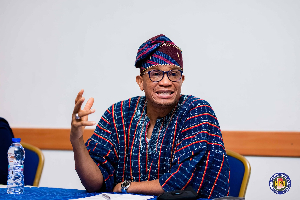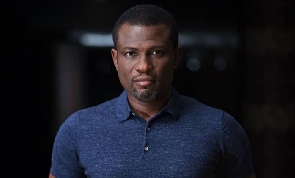By Bernard Asubonteng
Ghana is not a failed in the true sense of the word as Mr. Kobina Arthur Kennedy’s article (ref: Is Ghana a Failed State?) published on March 7, 2012 on the Ghanaweb seems to want us to believe. Reading the heading of the said article, one may be led to assume that the writer meant to stir up a disinterested discussion or ask a non-judgmental rhetorical question vis-à-vis the political cum socioeconomic conditions of Ghana since independence. However, after carefully reading the whole piece, one was left with no doubt that Mr. Kennedy’s article was, indeed, an indictment of the fact that “Ghana is a failed state.”
I disagree with the premise of Mr. Kennedy’s argument. Besides the article’s hyperbolic assumptions or conclusions about Ghana’s failed predicament, the article also failed woefully to explain that there is a veritable chasm between “a failed nation-state” per se and an underdeveloped nation-state. Mostly, Mr. Kennedy’s assessment in the said article was a factual description about Ghana as a country that is struggling to develop or keep apace with the so-called developed countries as opposed to being a “failed state.”
In fact, if we were to deconstruct what pass for a “failed State” in the contemporary international relations paradigm, it is clear that Mr. Arthur Kennedy’s analysis or implicit conclusion regarding Ghana’s plight was inaccurate or overly stated. So, for the benefit of all, including Mr. Arthur Kennedy, let us post the method by which the Fund for Peace an organization that mainly compiles Failed States Index almost every year to get a fair sense of what we are discussing here. Before posting the organization’s methodology, though, it is important to note that since 2006 up to now Ghana is not even ranked among the top six countries that make up of the world’s Failed States index.
Indeed, the Fund for Peace (FfP) uses its Conflict Assessment System Tool (CAST), an original methodology it has developed and tested over the years. CAST is a flexible model that is capable of employing a four-step trend-line analysis, consisting of (1) rating 12 social, economic, political, and military indicators; (2) assessing the capabilities of five core state institutions considered essential for sustaining security (security apparatus); (3) identifying idiosyncratic factors and surprises; and (4) placing countries on a conflict map that shows the risk history of countries being analyzed.
For the Failed States Index, the FfP focused solely on the first step, which provides snapshots of state vulnerability or risk of violence for one time period each year. The data used in each index are collected from May to December of the preceding year. The CAST software indexed and scanned more than 90,000 open-source articles and reports using Boolean logic, which consists of key phrases designed to capture the variables measured.
Full-text data are electronically gathered from a range of publicly available print, radio, television and Internet sources from all over the world, including international and local media reports, essays, interviews, polling and survey data, government documents, independent studies from think tanks, NGOs and universities, and even corporate financial filings. The software determines the salience of the 12 indicators as well as hundreds of sub-indicators by calculating the number of "hits" as a proportion of the sample for a given time period. Quantitative data is also included, when available. Subject-matter experts then review each score for every country and indicator, as well as consult the original documents, when necessary, to ensure accuracy.
According to the FfP, the twelve yardsticks or indicators are: Demographic Pressures, Refugees/IDPs, Group Grievance, Human Flight, Uneven Development, Economic Decline, Delegitimization of the State, Public Services, Human Rights, Security Apparatus, Factionalized Elites, and External Intervention. The order of the ranking is predicated on the total number of scores of the 12 indicators. Based on the preceding seemingly universally acclaimed scientific analysis used by the afore-mentioned organization to define what constitutes a “Failed State,” one also wonders how Mr. Kennedy arrived at his conclusion that Ghana falls in the “failed State category?
No question, Mr. Kennedy made a persuasive case about Ghana’s unacceptable level of progress since it gained independence in the late 1950s. That is not the centerpiece of my disagreement. He was right to say that “generations of mediocre leadership” is one of the major stumbling blocks to the nation’s overall development. In addition, one will also suggest that Ghana is wallowing in underdevelopment status because we tend to accept limits instead of pushing hard to transcend limits.
One other important point raised in Mr. Kennedy’s article was the wrong assumption among some Ghanaians that somehow it’s unfair to compare Ghana to countries such as South Korea, Singapore, Malaysia, and the like. Certainly, we make sense of the world by associations or comparisons. We know that something is bad because we understand what is good and so forth.
Many of us do not see anything wrong trying to learn from someone how to fish for yourself rather than to be given a fish by someone whenever you have a taste for fish. Learning from other countries about how they succeeded can’t be a bad idea. Yes, Ghana needs to get up and dust itself off the ashes of mediocrities and inertia. However, a good many of us do agree that it’s a “failed State” as Mr. Arthur Kennedy’s article portrayed it.
The writer is based in Atlanta, Georgia. He has Master of Science degree in international relations, specialized in US national security affairs. He can be reached at b.asubonteng@gmail.com.
Opinions of Friday, 9 March 2012
Columnist: Asubonteng, Bernard


















